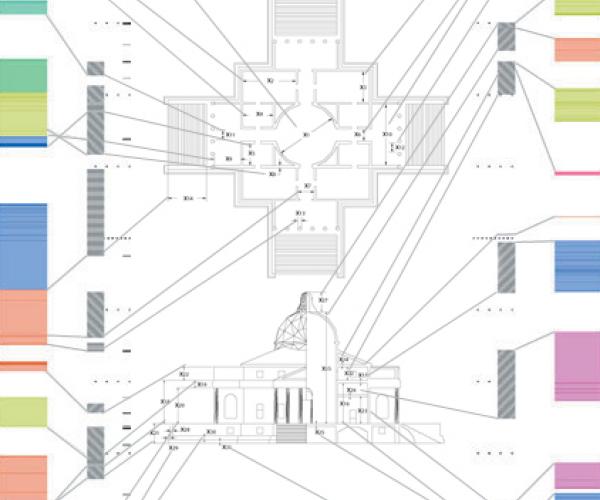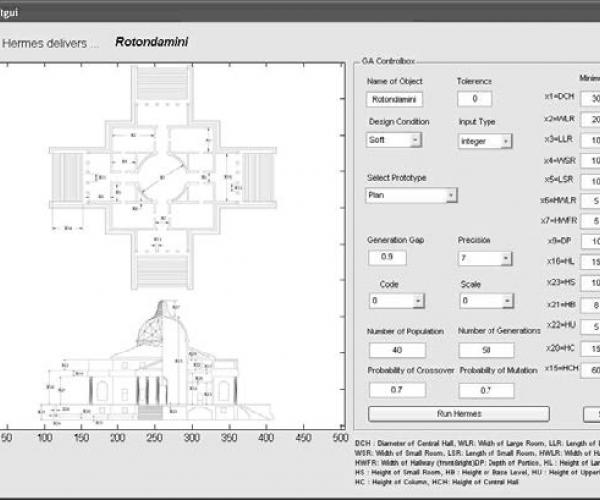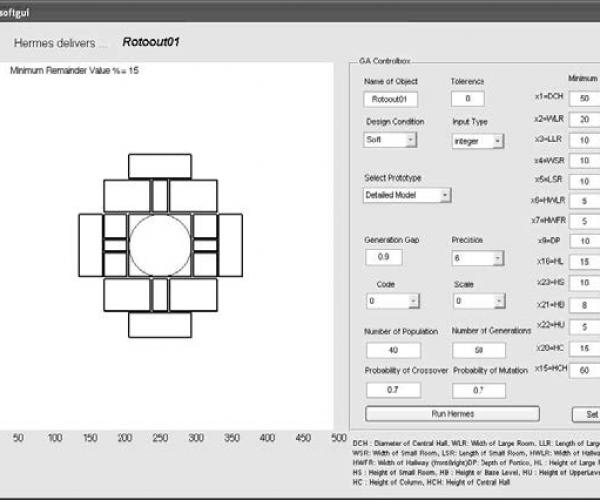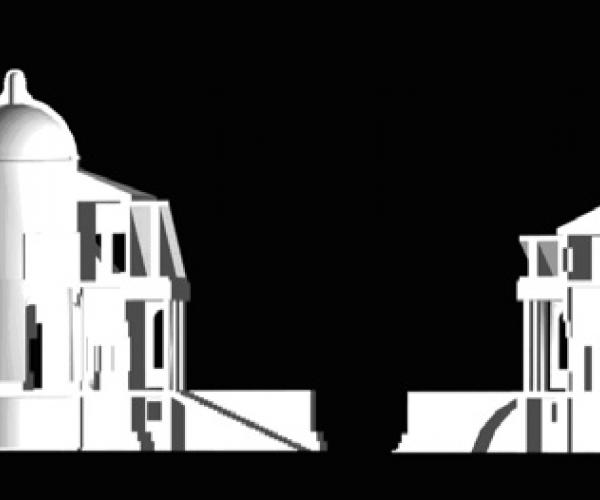Parametric Variations of Palladio's Villa Rotonda
A computational tool for the study of proportional balance is introduced as an apparatus for investigating Andrea Palladio’s design of Villa Almerico, more familiarly known as Villa Rotonda, in the second book of his Quattro Libri dell’Architettura. The objective of this investigation of Villa Rotonda is to find a novel outcome from the morphological transformations of the villa, where the transformations are generated from parametric variations of the villa while maximizing its proportional balance. The outcome confirms Palladio’s mastery of proportional treatments of his design of Villa Rotonda and shows various morphological descendants evolved from the original design. It suggests a new way of employing a parametric geometry in the formal study of a classical building and its stylistic evolution.
DESCRIPTION
The process of learning a formal composition in architecture and refining it for a better design result usually involves meticulous trial and error routines, which require a considerable amount of patience and effort. The computational power of Hermes minimizes the mathematical sophistication demanded for the study of proportional theory in architecture. In providing an interactive user-interface and feedback system with various outputs in numerical and visual formats, including a rapid instantiation of three-dimensional geometric models, Hermes allows a designer to understand a master’s original manipulation of proportion in a given design artifact with “reflection in action” (Shon, 1987). In this case, Genetic Algorithm (GA) is employed for 1) performing targeted parametric variations of the original villa in order to find an optimum villa design based upon proportional balance while maintaining the formal structure of the original villa, and 2) generating various morphological transformations from the original villa while allowing a user’s interaction to guide the transformations (Michalek, 2001; Kelly et al, 2006). In the process of finding the optimized villa, Hermes provided numeric data that confirms the excellence of Palladio’s treatment of proportional balance in the design of Villa Rotonda (Wittkower, 1971; Howard and Longair, 1982; Tavernor and Schofield, 1997).
Our understanding of where we live
is not so philosophical but rather pragmatic
Understanding urban environment with quantifiable measures has been the source of debates
Well then becomes the one of heated discussions … now possiblly the one of main trends






